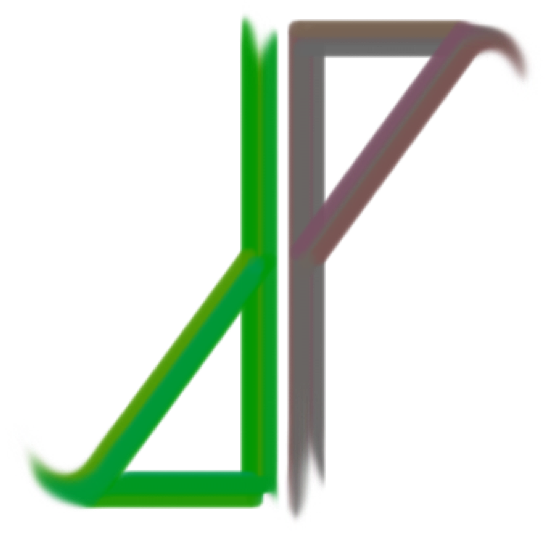It all started after I discovered Psychology and made it my primary focus of studies at University of Nevada, Reno. A keen interest in human behaviour (and French) led me to earn a double major in these two subjects.
During this time, something sparked my interest in Informatics. A module called "Computers in Psychology" taught me how to program my own perception-psychology experiments in Visual Basic.NET. Although I enjoyed learning computer programing, it wasn't enough for me to want to become a programmer. My academic interests were still in the study of human behaviour.
I knew I wanted to be involved in Informatics... I just didn't know how.
Shortly after graduating, I began exploring possible "bridges" from Psychology to Informatics. After reading a few interesting articles I discovered the work of Mary Czerwinsky, a Researcher in Human Centered Computing at Microsoft. She earned a PhD. in Cognitive Psychology, but crossed into Informatics via something called Human-Computer Interaction (HCI). Getting to know what HCI as a practice was career-defining for me.
HCI was immediately appealing to me because of its multi-disciplinary roots. It is based primarily on Computer Science, Psychology, Human Factors and Engineering. It involved something I was already familiar with, and something I wanted to know more about. It felt like it was the right career to pursue.
Being an interdisciplinary field, I was expecting to engage in a post-graduate programme that would be just that: interdisciplinary. I didn't know there would be such a thing as a Human-Computer Interaction Masters or Ph.D programmes. This was until I discovered various post-graduates programmes --amongst them, the Human-Computer Interaction MS program at IUPUI, where I was accepted.
It was at IUPUI where I was introduced to some of the many ramifications spanning from HCI: Usability, Interaction Design, Psychology of HCI, among many others. The training received in this programme, ultimately allowed me to find a job as an Interaction Designer at Pearson Education.
I was still an HCI Masters student when I started as a designer at Pearson. During this time, I was able to recruit some of my fellow co-workers as participants to test the hypothesis of my Masters thesis on new a UX prototyping technique for mobile devices called "Paper-in-Screen Prototyping". It went on to become a published article in ACM's Interactions Magazine, as well as UX Magazine.
After a couple of years in Indianapolis, I got an offer from Roundarch in Chicago. I love that city -but I had been considering moving to New York City for some time. This led me to accept a position as a User Experience Designer at their NYC office instead.
This was at the beginning of 2011. Later that year, I had the chance to go to IxDA's Interaction 11 conference in Boulder, Colorado. It was there where I met some of Dell's Enterprise Experience Design Group team members. After a couple of conversations, I found Dell's plans for a UX-driven approach towards enterprise software rather interesting. This led me to pack my bags and move south to the "Live Music Capital of The World": Austin, Texas.
I stayed at Dell for nearly 3 years. Right around the time Michael Dell had finished buying his own company back to turn it private, I found an interesting opportunity to further my knowledge (and contribution) to the world of Enterprise UX Design. I joined Rackspace in 2014 as part of RED (Rackspace Experience Design) as a Lead Interaction Designer to work for the "open cloud".
Mobile UX design was still at the heart of my passion in my practice as a designer. A year and a half after joining Rackspace, I decided to seek a more mobile-specific horizon for my career. It was in 2015 when JP Morgan Chase found me and asked me to move back to New York to be a lead designer in charge of designing the next generation of mobile payment solutions for Chase. With the opportunity to lead and mentor younger designers, as well as focus exclusively on mobile design, I packed my life and moved it back to Manhattan.
At Chase, I was involved in leading the mobile design for Chase Pay: Chase’s first mobile payment app. After two years working this personal banking product, I moved over to business banking, where I continued focusing on mobile design while trying to solve the more complex type of design and banking problems this sector of the bank has. My last project in this space was leading desing efforts in bringing new life to a point-of-sale solution (think “Square” or “Clover”) called Chase Mobile Checkout.
In October of 2019, I ended my 4 year stint at JP Morgan Chase and accepted a position as a Lead Mobile Interaction Designer at Adobe, where I was part of the Commerce team. My work there was focused on various mobile aspects related to commerce, including Adobe.com, and Paywalls on native mobile apps for iOS and Android.
One year later, one of my professional dream jobs became a reality. I joined Google as an Interaction Designer. I work within the Search organization, focusing on features around the overall search experience for the iOS and Android versions of the Google app.


